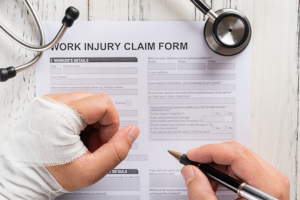
Four Crucial Questions to Ask Yourself When Filing
Accidents can happen anywhere, at any time. Although we can’t control when or how an accident arises, we can control the aftermath and we do hold the power in our hands as to the extent to which an accident (or its repercussions) affects those in its wake.
One of the most proactive steps you can take to mitigate the damage of an incident is to have a strategic plan set in place before it’s too late. This way, when something happens, those in the immediate environment know how to react, both during and after. Specifically, if there’s an injury to a worker, responding quickly to help this individual and take account of potential implications of the situation is beneficial for everyone involved.
Here are the 4 most crucial questions you want to keep in mind when filing an Employer Accident Form:
- What injuries are observable on the worker immediately following the accident?
What injuries stand out to you right away? Make note of them, while also taking into account all unaffected areas as well. Assess head, back, dizziness, loss of consciousness, etc. Ask the worker kindly to please deny injuries that you can’t see, and document specifics (especially the severity) of the injuries that you can see.
- Are there any eyewitnesses to the accident?
Take written statements from all present eyewitnesses and make note of all attendees. Someone may hold a point of view different from your own, and gathering multiple perspectives could strengthen your case.
- Where and when did the accident happen?
Did this accident occur on an actual work site? At an off-site location? While on break? Details are everything at this moment. None are too small. Document all the specifics as to where this individual was and when this incident occurred. Your defense needs a solid foundation. It’s always better to have information we don’t ultimately need than to need information we don’t have.
- Was the Claimant performing designated job duties, sanctioned work activities at time of the accident?
What was he/she doing at the moment of injury? Were they following their typical routine without fault? Were they using unauthorized equipment or completing unassigned tasks at the wrong time? Following recommendations on how to thoroughly document incidents routinely also aids in lessening unnecessary and avoidable costs. We advise that important personnel keep a daily log for each work site, ideally accompanied by worker signatures confirming no accidents occurred that day. When the unexpected does happen, witness statements should be taken from all eyewitnesses and supervisors. Following the incident, summaries of conversations with Claimants should be kept on file, especially when it relates to notice of injuries, unrelated termination, or communications regarding sick leave.
